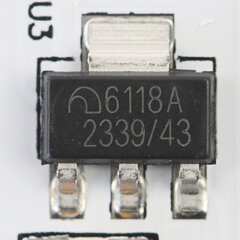 10
10
NuPhy Air96 V2 Low Profile Wireless Mechanical Keyboard Review
Software »Disassembly
Low profile keyboards are not that common in the first place, and having one with hot-swappable switches is even more exclusive. As such, I wanted to begin this page with a closer look at the NuPhy Cowberry switches. The top and bottom housing are held together via clips on the side as typical of mechanical switches, allowing for the lubed stem to slide up and down machined pathways in the housing with the lubed spring providing resistance. The stem is rounder inside and has a section in the middle which juts out to push the copper contacts in the bottom housing together. This happens in the middle, as opposed to the side in full-size switches. The actuation is then read by the microcontroller on the keyboard as usual.
Disassembly of the keyboard is not the easiest and has a good chance of damaging the interlocking plastic tabs used here. There are 11 Phillips head screws to be removed first, all of them are under keycaps, but three are hidden—one under a telltale QC sticker under the L.Ctrl keycap and the other two below the silicone pads under the space bar keycap. Then use a thin, flat object to pry apart the top frame and bottom case panel carefully enough to allow access to the internal cable going from the 4000 mAh battery in the bottom panel to the PCB tied to the frame. The battery size is decent for a wireless keyboard in 2024, especially one this size. There is no dampening sheet between the PCB and the case—there is enough room clearly—although we do see one used between the frame and the PCB itself.
Given NuPhy's close relationship with Gateron on the switch front, it wasn't a surprise to see Gateron hot-swappable switch sockets used on this white PCB. Solder quality is exceptional throughout and there are a lot of components here too. Powering the keyboard is an STMicroelectronics STM32F072 32-bit ARM Cortex USB microcontroller based off the RISC (Reduced Instruction Set Computing) architecture. It has up to 128 Kb of onboard flash memory and 16 Kb of SRAM. Wireless connectivity comes via the Nordic Semiconductor nRF52810 Bluetooth 5.4/LE/2.4 GHz SoC. A Think Semiconductor SY6201 low power fast charger provides up to 2 A of current to the keyboard, although you are still restricted by the USB interface used. All the components, including the switch sockets, SMD LEDs, and capacitors, are soldered to a multi-layered PCB.
Before we move on, be advised that disassembly may void the warranty and that TechPowerUp is not liable for any damages incurred if you decide to go ahead and do so anyway.
Mar 10th, 2025 12:30 EDT
change timezone
Latest GPU Drivers
New Forum Posts
- 2022-X58/1366 PIN Motherboards NVME M.2 SSD BIOS MOD Collection (903)
- Gaming PC instabiliity (11)
- RX 9070 availability (158)
- Surface laptop 5 TPL Speed Shift ignored? (1)
- What's your latest tech purchase? (23268)
- newegg ATX 3.1 PSU on Clearance and Free Fan (0)
- Looking for silent 9070 (XT) (9)
- Zen6 is almost here ? (43)
- AMD RX 9070 XT & RX 9070 non-XT thread (OC, undervolt, benchmarks, ...) (1)
- AAF Optimus Modded Driver For Windows 10 & Windows 11 - Only for Realtek HDAUDIO Chips (374)
Popular Reviews
- Sapphire Radeon RX 9070 XT Nitro+ Review - Beating NVIDIA
- XFX Radeon RX 9070 XT Mercury OC Magnetic Air Review
- ASUS Radeon RX 9070 TUF OC Review
- MSI MAG B850 Tomahawk Max Wi-Fi Review
- NVIDIA GeForce RTX 5080 Founders Edition Review
- NVIDIA GeForce RTX 5070 Founders Edition Review
- Corsair Vengeance RGB CUDIMM DDR5-8800 48 GB CL42 Review
- AMD Ryzen 7 9800X3D Review - The Best Gaming Processor
- ASUS GeForce RTX 5070 Ti TUF OC Review
- MSI GeForce RTX 5070 Ti Gaming Trio OC+ Review
Controversial News Posts
- NVIDIA GeForce RTX 50 Cards Spotted with Missing ROPs, NVIDIA Confirms the Issue, Multiple Vendors Affected (513)
- AMD Plans Aggressive Price Competition with Radeon RX 9000 Series (277)
- AMD Radeon RX 9070 and 9070 XT Listed On Amazon - One Buyer Snags a Unit (261)
- AMD RDNA 4 and Radeon RX 9070 Series Unveiled: $549 & $599 (260)
- AMD Mentions Sub-$700 Pricing for Radeon RX 9070 GPU Series, Looks Like NV Minus $50 Again (248)
- NVIDIA Investigates GeForce RTX 50 Series "Blackwell" Black Screen and BSOD Issues (244)
- AMD Radeon RX 9070 and 9070 XT Official Performance Metrics Leaked, +42% 4K Performance Over Radeon RX 7900 GRE (195)
- AMD Radeon RX 9070-series Pricing Leaks Courtesy of MicroCenter (158)
















